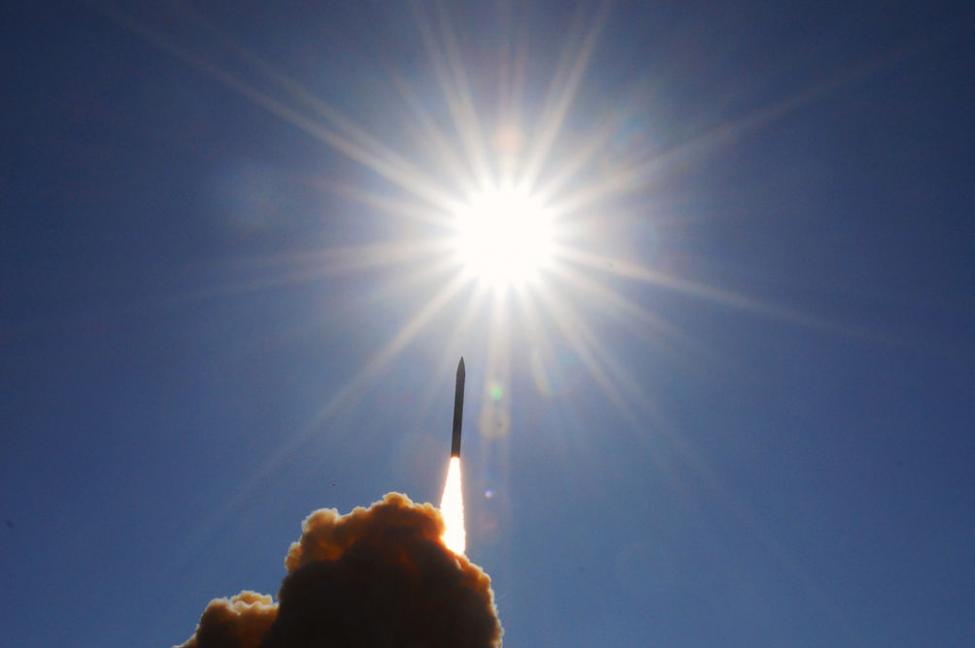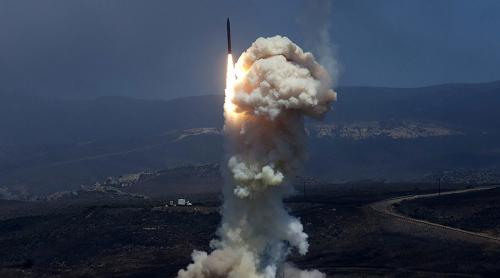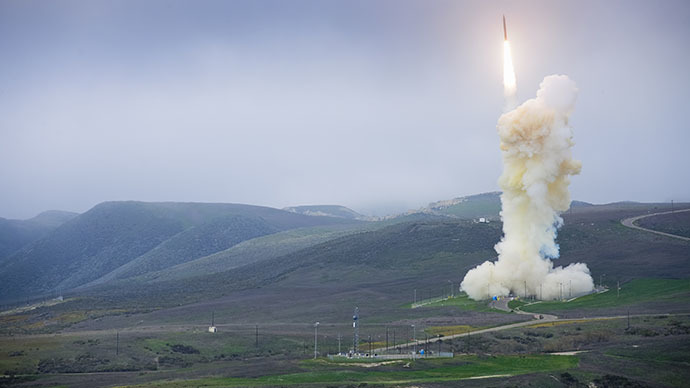
WASHINGTON — A monumental intercept test for the United States’ critical homeland defense system designed to defend against intercontinental ballistic missile threats from North Korea and Iran was a success, the Missile Defense Agency announced Tuesday shortly after the test.
As North Korea’s missile capabilities continue to grow, successful tests of the Ground-based Midcourse Defense System that are specifically designed to go up against those possible missile threats are imperative, defense officials have said.
The test marks the first time the Ground-based Midcourse Defense system has gone up against an ICBM-class target, although some previous tests have featured intermediate-range ballistic missile targets that have approached ICBM speeds.
During the test conducted by the MDA in cooperation with the U.S. Air Force 30th Space Wing, an ICBM-class target was launched from the Reagan Test Site on Kwajalein Atoll in the Republic of the Marshall Islands, according to an MDA statement released shortly after the test.
A ground-based interceptor was launched from Vandenberg Air Force Base, California. As designed, “its exo-atmospheric kill vehicle intercepted and destroyed the target in a direct collision,” the statement reads.

This graphic shows details of a U.S. missile launch targeting an ICBM.
Photo Credit: AP
"The intercept of a complex, threat-representative ICBM target is an incredible accomplishment for the GMD system and a critical milestone for this program," MDA Director Vice Adm. Jim Syring said in the statement. "This system is vitally important to the defense of our homeland, and this test demonstrates that we have a capable, credible deterrent against a very real threat."
Multiple sensors were also put through the paces to provide target acquisition and tracking data to the Command, Control, Battle Management and Communication (C2BMC) system, according to the MDA. The Sea-Based X-band radar in the Pacific Ocean picked up and tracked the target, relaying the data, triggering a GMD system response.
“Initial indications are that the test met its primary objective, but program officials will continue to evaluate system performance based upon telemetry and other data obtained during the test,” the statement said.
The system is, as of now, comprised of 36 ground-based interceptors buried at Fort Greely, Alaska, and Vandenberg. The MDA will finish fielding all 44 interceptors by the end of 2017.
“This is an important day for homeland missile defense,” Tom Karako, a missile defense analyst at the Center for Strategic and International Studies told Defense News. “ Hit-to-kill has once again been validated, and this time against an ICBM. The Missile Defense Agency has been on a long road to improve the reliability and capability of the GBI fleet. Details are still coming in, but today’s test promises good things for the defense of the nation.”
The much-anticipated test follows a series of successes and failures. Trouble with the interceptor’s exo-atmospheric kill vehicle (EKV), designed to destroy targets in high-speed collisions after separating from a booster rocket, plagued the program.
Both 2010 and 2013 saw interceptor test failures. During the July 2013 test, the kill vehicle failed to separate from the booster rocket.
The tide turned in June 2014 when the agency notched a successful intercept test, bringing its success record to four in 17 tests. Since 1999 there have been 16 flight intercept tests, nine successful. Only four of nine since 2002 have succeeded and two of four since 2008 ended in a hit.
The test in 2014 was the first successful test of its kind in five and a half years.
By the time the 2014 test rolled around, MDA officials were seriously questioning what needed to be done to fix the system — one option was to abandon the upgraded version of the GBI struggling in tests and move on down a more aggressive path to redesign the kill vehicle.
In January 2016, the GMD system completed a successful non-intercept flight test designed to evaluate the performance of the redesigned thrusters in its interceptor’s kill vehicle. The divert thrusters were redesigned to address the fundamental problems experienced in the previous version of the EKV.

A failure in Tuesday’s test would have likely delayed the deployment of some redesigned kill vehicles expected to go to Fort Greely by the end of 2017.
One analyst expressed skepticism that the test proves the U.S. has the homeland missile defense strategy right against North Korean threats.
"Based on its testing record, we cannot rely upon this missile defense program to protect the United States from a North Korean long-range missile. If anything, over-reliance on missile defenses could impede diplomatic efforts that could avoid a dangerous confrontation," Philip Coyle, who formerly headed the Pentagon's office of operational test and evaluation and is now a senior science fellow at the Arms Control Center, warned in a statement. "In several ways, this test was a $244 million dollar baby step, a baby step that took three years."
MDA plans to spend nearly a billion dollars for homeland missile defense in 2018.
The agency is requesting $828.1 million for the GMD system in its fiscal year 2018 budget request released last week. MDA is asking for $465.5 million for improved interceptors as part of the redesigned kill vehicle and improve in-flight communications to better use off-board sensor data.

Another major test of the GMD system is planned in FY18 — FTG-11 — which is the first operational flight test of the system. The test will consist of a salvo intercept using GBIs launched from Vandenberg against ICBM threats from the Reagan Test Site.
http://www.defensenews.com/articles...-defense-interceptor-test-against-icbm-target
